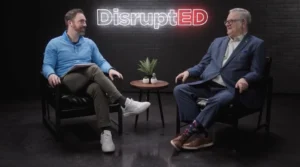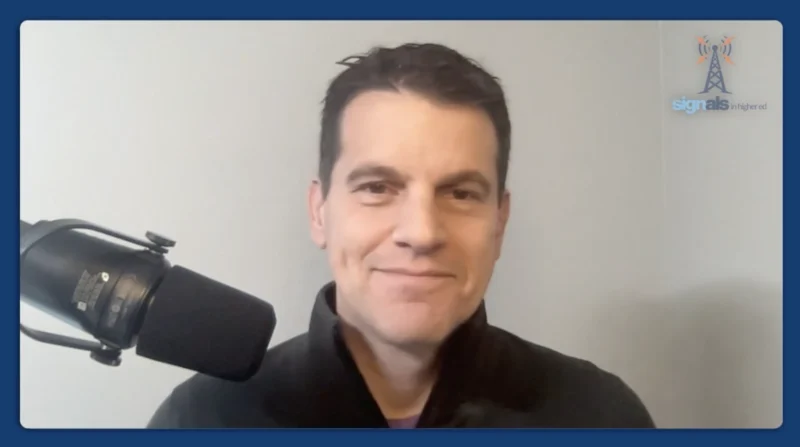The Great EdTech Audit of 2022 Roundtable
Wrapping up the 2022 school year, we’re finally starting to see the full repercussions of the pandemic and the effects COVID-19 has had on the US education system. McKinsey & Company quotes 2020-21 to be “the most disrupted of school years,” with analysis suggesting that students were on average “five months behind on mathematics and four months behind in reading by the end of the school year.”
But while educators and school districts have been able to adapt their operations to remote and hybrid learning and curb some of the more pressing short-term instruction needs, meeting that operational burden came with its own problems. Namely, a massive investment into education technology solutions came with a cost, and now schools are having to grapple with that expenditure. Research from LearnPlatform in its EdTech Top 40 Mid-Year Report found that an “average US school district with over 1000 students accessed nearly 1,500 edtech tools each month; SSO tools, classroom instructions, design tools, supplemental platform, LMS, resource hubs.” The usual suspects. Of course, these investments can be useful, and when implemented correctly and effectively can enhance the learning experience for the student’s benefit. The key word here is ‘effectively,’ and in-depth analysis from the EdTech Genome Project Report found that effective COVID edtech implementations were not the norm. “Tens of billions of dollars are spent each year on edtech that is underused, inequitably used, or ineffectively used” according to the study.
Education decision makers are now tasked with reviewing their edtech investments and deciding what’s worth keeping, what needs to be cut. But to do that, they’ll need to accurately gauge the impact and ROI of each technology on student academic success. Potentially thousands of tools to review has education experts aptly calling this critical moment “The Great EdTech Audit.”
To explore the implications of this coming audit and how to lay out a review strategy for success, host Daniel Litwin sat down for a roundtable with guests JW Marshall, VP of Marketing at Summit K12, Dr. Curtis Culwell, Executive Director at the Texas School Alliance, Michael Horn, Co-Founder of Clayton Christensen Institute for Disruptive Innovations, and Dr. Thomas Waite, President & CEO of K16 Solutions. Breaking down the main edtech errors during COVID and how to resolve them, the four thought-leaders gathered to provide their stance on the next steps in creating an innovative and well-resourced educational environment.
“The financial commitments that have been made may be the issue… Tendency to have continued stack in new technology on old technologies, procurement and acquisition is laborious,” Dr. Culwell said.
One of the big and immediate problems with COVID edtech investment was neatly summarized by Horn: “People in COVID rushed to grab technology, made investments, and stuck with it.” There was virtually no time or planning involved in these decisions, some of which was out of school’s control. But regardless, Horn saw a common strategy of layering technology “on top of existing practices instead of thinking about the purpose.” Although these two years have been seen as an anomaly for education, Dr. Waite and his team have “been preaching it for 20 years,” hinting that “schools should’ve been ready with online and blended learning.” Even before the pandemic, “the educational gaps that existed before the pandemic – in access, opportunities, achievement, and outcomes – are widening,” as validated by the U.S. Department of Education.
As Dr. Waite sees it, another reason why it’s still a struggle to implement technology into education effectively is because of “RFPs, politics, clutter, and bureaucracy.”
“Sometimes we can’t really get our way to choose the best systems because of the RFP process,” he said.
Marshall agreed that the delay in deployment of solutions creates an inescapable catch-up process: “By the time you implement something, things change.”
The lingering thoughts of having to completely start over on the process of selecting a proper solution, combined with the ego and pride attached to a project investment, are other key factors why Marshall believes it’s so difficult to implement a viable system.
Even with billions in federal spending during the pandemic, another important consideration for school districts moving forward is how much monetary support they’ll have from institutions in supporting future spend. DataLab offers a breakdown of federal spending in 2021 exhibiting educational spending to be at an underwhelming 4% of the budget compared to healthcare (12%), national defense (11%), and Medicare (10%).
“Investment infrastructure is highly broken in the education space,” said Horn.
When it comes down to measuring actual performance indicators, it’s important that the school districts measure the right things. Dr. Waite promotes an ecosystem of proactive feedback: teachers and students assessing the technology to provide usable data for edtech integrations to move faster, reporting back to legislative bodies and working together to find best practices. In a sense, this is a collaborative effort that needs to be in place for all parties.
“Edtech companies should come forward to say, ‘this is the right assessments to use to what our objectives are,’” said Horn. But it’s not just on edtech companies to make their tools’ measures of success clearer; there needs to be an established line of communication from all parties to enable proper tool assessments.
“Researchers complain all the time that they don’t have the access to the districts themselves to even do these researches. Districts complain that they don’t have the efficacy,” Horn said. The big objective of having effective data is to be more actionable with objectives, proving through metrics, and thus clearing the clutter.
Moving onto actionable strategies for schools, Dr. Culwell believes analyzing utilization is the best first step for audit success. Look at your ROI; is there a utilization gap in your expectations and expenditures? Marshall advocates for following the three E’s of edtech investment: “Effective, Efficient, and Engaging,” touching on key points in performance, achievable goals at a faster rate and lower cost, and if students and educators are engaged in the products. Horns adds onto Marshall’s perspectives with an insistence on getting rid of a ‘generalized solution’ mentality with curricular tools.
The one-size-fits-all mentality, in Dr. Waite’s view, is a reflection of the overtly partisan politicization of education in the last few decades. Whether teachers find that politicization useful or not is besides the point; as neaToday put it in a 2018 report, “everything in education – from textbooks to the curriculum to the policies that govern teachers’ work and students’ learning – is political and ideologically-informed.”
We’re seeing an uphill battle for stability in the education sector as educators adapt to continued new integrations of technology and gauging the ROI of each investment. However, with the cogs on the edtech machine turning away, Horn predicts the next two years will be highly eventful for edtech, and decision makers should prepare for making sure future investments better align with short- and long-term goals in their district. Watch the full roundtable for more analysis on how to maneuver the Great EdTech Audit.
Article written by Christopher Boris and Daniel Litwin. Article editing by Daniel Litwin. Video edit by Gabriel Barton. Title graphic by Garrett Golightly.







